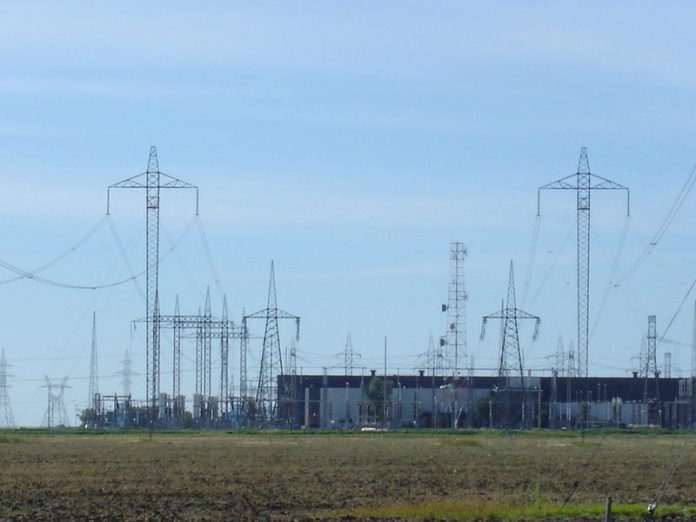The North American Electric Reliability Corporation (NERC) released the 2023 edition of its biannual ERO Reliability Risk Priorities Report, in August. The report aims to “identify key risks to the BPS [bulk power system] that merit attention and to recommend mitigating actions that align with those risks.”
The report highlights five “risk profiles” to the nation’s electrical grid’s resiliency and dependability, including “security risks,” “resilience to extreme events,” “critical infrastructure interdependencies,” “grid transformation,” and “energy policy.”
Energy Policy Top Risk
“Energy policy” was featured in this year’s report for the first time as a risk, “given the increased legislation focus and mandates on decarbonization, decentralization, and electrification.”
A “changing resource mix,” that is, the continuing shift from nuclear- and fossil fuel-sourced electricity such as coal and oil to “renewable” sources like wind and solar, was ranked as the highest risk factor to the nation’s electric grid, in the report, ahead of “resource adequacy and performance” and “cybersecurity vulnerabilities.” This grid restructuring is “emerging, imminent, [poses a] significant threat, and [requires] thorough strategic planning and industry collaboration to mitigate,” says NERC’s report.
“As the resource mix continues to rapidly change from one that was limited by rated capacity to one that is more fuel/energy-constrained, new approaches are needed to assess and ensure energy sufficiency for all hours throughout the year,” NERC’s report states. “Recent extreme events show energy sufficiency to be a significant dimension of risk given the changing resource mix and actual performance of the grid versus assumptions used in previous assessments.
“It is now insufficient to assume that the system is adequately planned by comparing the peak load hours with the generation capacity,” NERC continues.
‘Disaster Looms … Doing Nothing to Reverse Course’
It is long past time NERC acknowledged the threat to the U.S. electric power grid posed by the push to replace fossil fuel power sources with intermittent renewables, says Steve Milloy, author and founder of JunkScience.com; sadly, however, the apparent danger doesn’t seem to be altering the government’s energy choices.
“For the first time, NERC has included government, euphemistically referred to as ‘energy policy,’ as a risk factor to our electrical grid,” said Milloy. “This unfortunately makes complete sense since the government knows that it cannot affect the climate via electricity generation yet is weakening our grid with wind and solar anyway while simultaneously burdening it with [electric vehicles] and other kinds of ‘electrification.’
“The truly weird part of all of this is that everyone knows it’s happening, that disaster looms, yet they are doing nothing to reverse course,” said Milloy.
NERC also notes the growth of wind and solar as a total percentage of the grid will have further impacts on their other risk profiles. For example, the “rapid expansion” in BPS infrastructure due to the new transmission lines, transformers, control rooms, and the unique technologies needed to bring these renewable sources online will “[increase] the potential cyber-attack surface and [will raise] the potential impact of coordinated attacks,” from foreign governments or eco-terrorists.
“Cyber and physical security are interdependent aspects, as exploitation of either physical or cyber security vulnerabilities could be used to compromise the other dimension,” says NERC’s report. “Resultant impacts could cause asset damage, functionality loss, or limit the situational awareness needed to reliably and resiliently operate or promptly restore the BPS.”
More Infrastructure, More Land, More Risk
A large increase in physical infrastructure is due to the addition of solar and wind power, requiring a massive expansion in the land footprint of the power system, which also contributes to the electric grid being susceptible to “extreme events.”
For example, a hurricane could “cause widespread destruction to BPS equipment, degradation of communication capabilities, loss of load, and damage to generation resources,” the report states, while extreme heat or cold could “cause higher than anticipated demand, overloading and [stress] failure of BPS equipment, and degradation of resource availability.”
These “extreme events,” do not have to be weather-related. NERC warns of the threat to physical infrastructure from “civil unrest, riots, labor action/strikes, and other events [that] could create potential issues around the physical security of the BPS as well as [the] safety of critical personnel necessary to carry out the actions needed to maintain the reliable operation of the BPS.”
This report is the most comprehensive ever produced by NERC detailing existing and emerging risks to the power system, some created by politics, said Ken DeFontes, chairman of the NERC board, in a press release accompanying the report’s release.
“This is the best [risk] report to date,” said DeFontes. “The committee has drawn attention to some key, new risk profiles including the need to bridge important jurisdictional lines in energy policy and the interdependencies between our industry and other critical infrastructures … while acknowledging the rapid pace of grid transformation and the increasing security threats.
“This report is important for industry as we prioritize the way to best assure the reliable operation of the North American grid,” DeFontes said.
Tim Benson (tbenson@heartland.org) is a senior policy analyst with Heartland Impact.
For more on the risk that renewable power sources pose to the electric grid, click here.


























